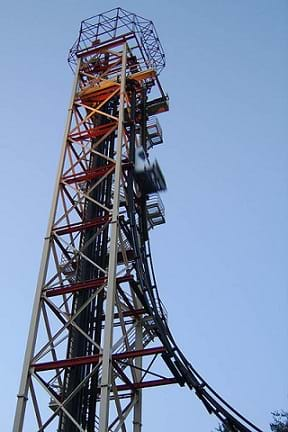
Summary
In the first of two sequential lessons, students create mobile apps that collect data from an Android device's accelerometer and then store that data to a database. This lesson provides practice with MIT's App Inventor software and culminates with students writing their own apps for measuring acceleration. In the second lesson, students are given an app for an Android device, which measures acceleration. They investigate acceleration by collecting acceleration vs. time data using the accelerometer of a sliding Android device. Then they use the data to create velocity vs. time graphs and approximate the maximum velocity of the device.Engineering Connection
Lessons and activities in this unit support the teaching of basic engineering education, especially engineering mechanics and program/system design. The computer science-based first lesson engages students to design pseudo-code and real code to address a given problem. Computer software engineers at companies such as Microsoft, Apple and Google have used their programming knowledge to design applications for mobile devices, similar to the work students do in this unit. The second lesson, in which students design an experiment to gather and analyze data related to acceleration, fits into the engineering mechanics realm, which serves to bridge the gap between theory and application. Through engineering mechanics, especially the concepts used by mechanical engineers, students can analyze and predict the acceleration and deformation of an object due to forces, also known as stresses. Engineering mechanics is based largely on Newton's laws of motion.
Educational Standards
Each TeachEngineering lesson or activity is correlated to one or more K-12 science,
technology, engineering or math (STEM) educational standards.
All 100,000+ K-12 STEM standards covered in TeachEngineering are collected, maintained and packaged by the Achievement Standards Network (ASN),
a project of D2L (www.achievementstandards.org).
In the ASN, standards are hierarchically structured: first by source; e.g., by state; within source by type; e.g., science or mathematics;
within type by subtype, then by grade, etc.
Each TeachEngineering lesson or activity is correlated to one or more K-12 science, technology, engineering or math (STEM) educational standards.
All 100,000+ K-12 STEM standards covered in TeachEngineering are collected, maintained and packaged by the Achievement Standards Network (ASN), a project of D2L (www.achievementstandards.org).
In the ASN, standards are hierarchically structured: first by source; e.g., by state; within source by type; e.g., science or mathematics; within type by subtype, then by grade, etc.
See individual lessons and activities for standards alignment.
Subscribe
Get the inside scoop on all things TeachEngineering such as new site features, curriculum updates, video releases, and more by signing up for our newsletter!Unit Schedule
- Day 1: Storing Android Accelerometer Data: App Design lesson
- Day 2: Android App Development activity
- Day 3: Android Acceleration lesson
- Day 4: Exploring Acceleration with an Android activity
More Curriculum Like This

Students work through an online tutorial on MIT's App Inventor to learn how to create Android applications. Using those skills, they create their own applications and use them to collect data from an Android device accelerometer and store that data to databases.

Students gain experience with the software/system design process, closely related to the engineering design process, to solve a problem. The lesson culminates in a hands-on experience with the design process as students simulate the remote control of a rover.

Students prepare for the associated activity in which they investigate acceleration by collecting acceleration vs. time data using the accelerometer of a sliding Android device. Based on the experimental set-up for the activity, students form hypotheses about the acceleration of the device. Students...

In this lesson, students learn about, design and create flow charts for different scenarios, including a game based on the Battleship® created by Hasbro©. In the associated activity, Flow Charting App Inventor, students apply their knowledge from this lesson and gain experience with a software appli...
Copyright
© 2013 by Regents of the University of Colorado; original © 2012 University of Nebraska-OmahaContributors
Scott Burns, Brian SandallSupporting Program
IMPART RET Program, College of Information Science & Technology, University of NebraskaAcknowledgements
The contents of this digital library curriculum were developed as a part of the RET in Engineering and Computer Science Site on Infusing Mobile Platform Applied Research into Teaching (IMPART) Program at the University of Nebraska-Omaha under National Science Foundation RET grant number CNS 1201136. However, these contents do not necessarily represent the policies of the National Science Foundation, and you should not assume endorsement by the federal government.
Last modified: September 7, 2017







User Comments & Tips